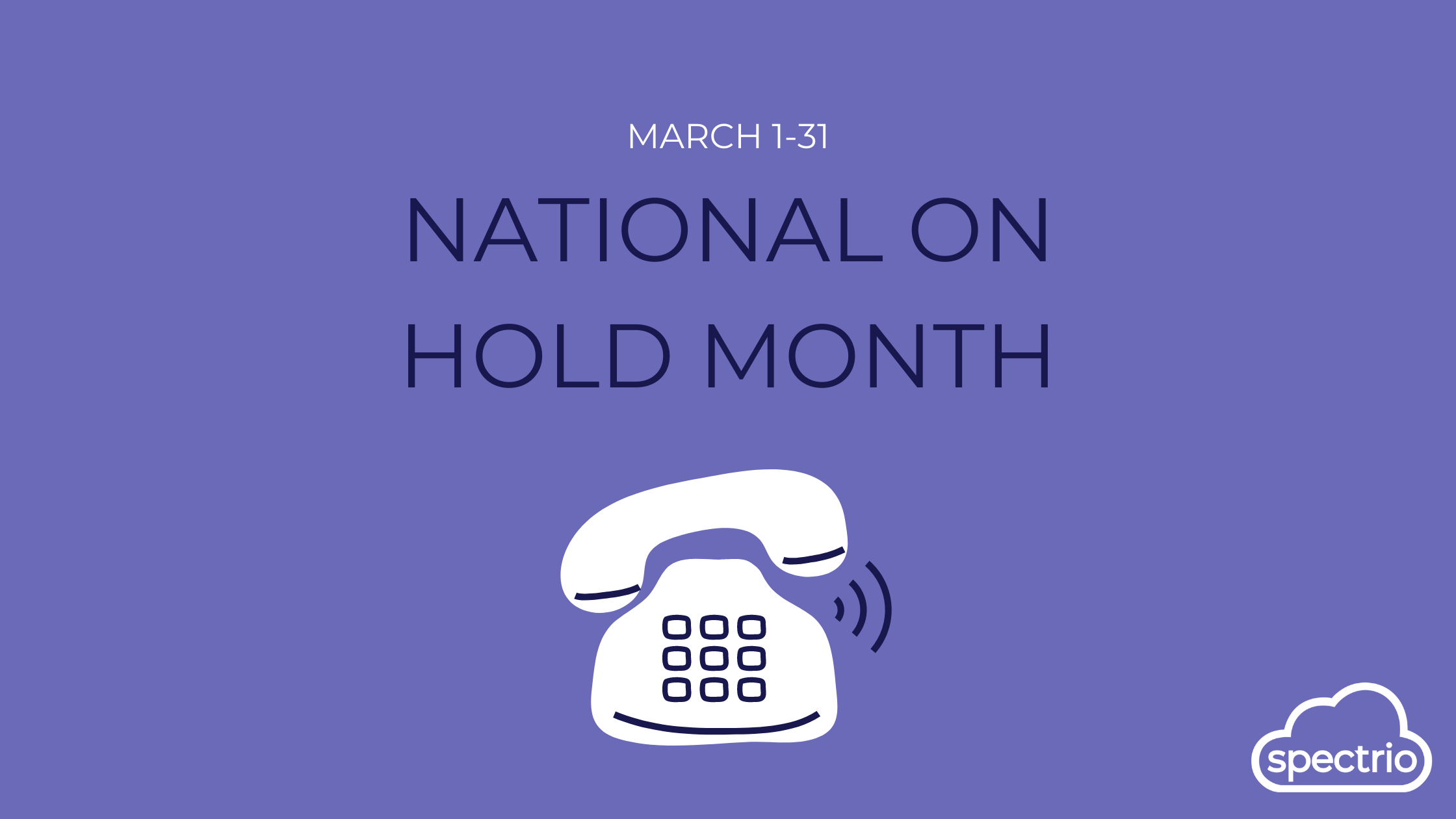In 1987, the Hold Company (Audiomax) named March as National On-Hold Month. This month was created to “recognize everyone who has been placed “on hold” after calling a place of business, and honors those businesses who make this hold time more enjoyable by supplying informative messages and music for their waiting callers.”
But 1987 doesn’t mark the start of on-hold messaging. This kind of marketing existed long before then, and has continued to grow and evolve over the years along with the technology that makes it possible. In this blog, we’ll explore the past, present, and future of on-hold messaging and its role in modern businesses.
The Beginning of On-Hold Messaging
In the grand scheme of human history, the telephone is a relatively recent invention. First patented in 1876 by Alexander Graham Bell, it transformed the way and speed that people could communicate with one another. It also rapidly surpassed the telegram and traditional mail as the preferred means of communication for people all over the world. Unsurprisingly, business owners were quick to incorporate this newest piece of modernity into their day to day operations with customers and potential customers alike. Following along in the wake of the telephone’s popularity were the beginnings of on-hold marketing.
Although not directly related to retail, Milton H. Herzman, frustrated with the volume and frequency of calls his organization was experiencing, invented the on-hold button. It was successfully patented and implemented into the Western Electric Series E phone in 1930. A little over thirty years later, in 1966, entrepreneur and factory owner Alfred Levy supposedly discovered that a loose wire was touching a metal girder on the building. This essentially made the building a giant receiver so that the audio broadcast signal from a radio station next door would transmit through the loose wire and could be heard when calls were put on hold–thus creating the first form of on-hold music.
The earliest form of hold messaging followed quickly after, consisting of branded announcements, reminders about business hours, and the important-if-rarely-subtle message of: don’t hang up!
On-Hold Messaging in the Present
The current state of the on-hold messaging industry is as varied as the kinds of business who rely on this form of marketing. Plans can range from the very basic–systems designed to solely greet, help, direct, and thank users–the the complex, where interactive messaging is designed to function almost as an automated, unpaid salesperson. Adjusting these plans to ensure your business makes the most of their on-hold messaging system should be heavily influenced by your target audience and their needs, but there are a few universal truths that might help you set a functional baseline.
Related Reading: This Is What an On Hold Messaging System Can Do For Your Business
Currently, the average hold time sits at around 56 seconds. Roughly 15% of callers will hang up once the wait time hits 40 seconds, which could mean a significant loss of business from new callers or dissatisfaction in returning customers. A few common and successful ways to engage customers in those first 40 seconds include:
Providing facts that lead into product introductions
Auto dealers can give a full description of their services with:
“You can depend on Tri-State Area Imports for your next vehicle, as well as parts, service, and body work. We have a huge inventory of new and pre-owned cars, trucks, and SUVs, all available for immediate delivery. Make us your one-stop-auto-shop!”
Showing customers how you can solve their problems
A veterinary clinic may lead with:
“If you are making travel plans, don’t forget about your pet! We’re pleased to provide a modern, comfortable home-away-from-home for your beloved pet when you’re on the road. Make a boarding reservation for your pet and save 10% on first-time stays!”
Highlighting the value of packages and complimentary services or products
A fast-food restaurant or catering service might include messaging like:
“Tough day at work? Did you stay later than you intended? Let us make dinner for you! Order over the phone or online and choose between our meal packages, ranging from personal meals to combos big enough to feed the whole family.”
Introduce lesser-known offerings
For a healthcare provider, this may sound like:
“Did you know patients with non-threatening illnesses can go online and reserve their place in line at the emergency room? Just visit our website to save your spot in line, online.”
Stress the urgency of time-sensitive offers
For retailers, this informational opener may prove beneficial:
“Time to give your wardrobe an update with amazing savings of to 60 percent off everything in the store! This week only, so come see us soon!”
However, it’s vitally important to note that on-hold marketing is not a stand in as a replacement for a live person. The overwhelming majority–around 90 percent–of respondents in a recent study prefer speaking with an employee of a company rather than an automated bot or answering service.
So what does this preference mean for the future of on-hold messaging?
The Future of On-Hold Messaging
Many long-time on-hold messaging users are making the move to Voice over Internet Protocol–VoIP, for short. Defined as “technology that allows you to make voice calls using a broadband Internet connection instead of a regular (or analog) phone line”, VoIP converts digital messaging and signage into internet-compatible formats.
Gone are the days of cassette tapes and CDs being used for on-hold messaging–now, with VoIP’s capabilities, audio is uploaded to the phone or computer systems directly. Despite this shift in the kind of technology being used in on-hold marketing and messaging, the messages themselves are unlikely to change. Customers still want to know what your business offers, answers to their questions, and the ability to discern if they’re going to get the items or services from you that they require, even without speaking to a real person.
If you are ready to reap the full benefits of a strategic on-hold strategy, contact Spectrio today.
